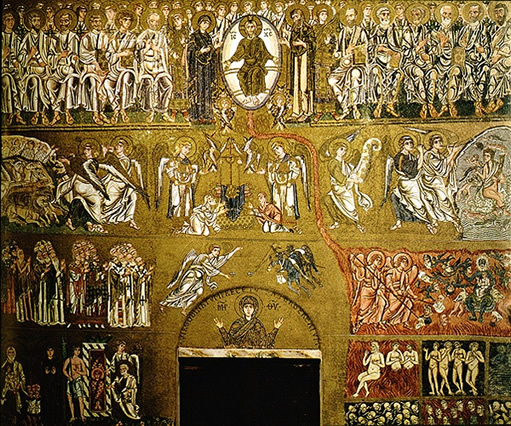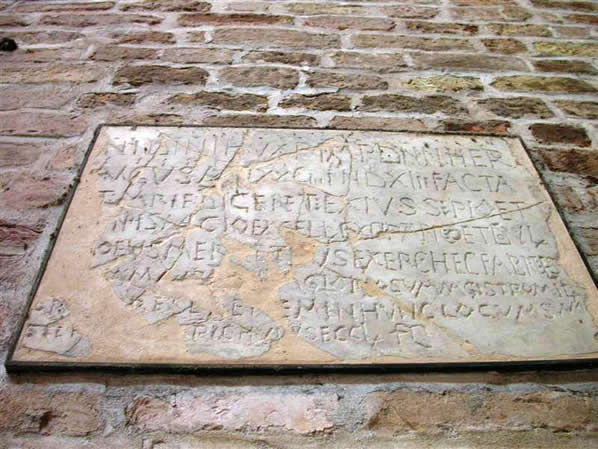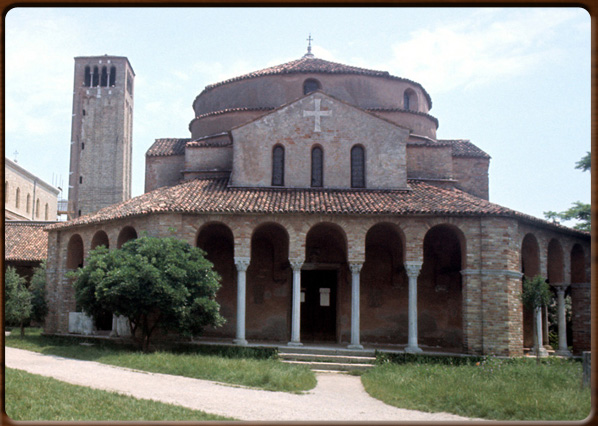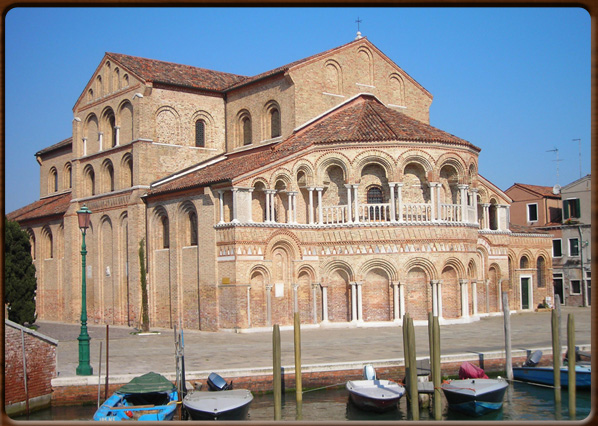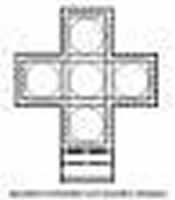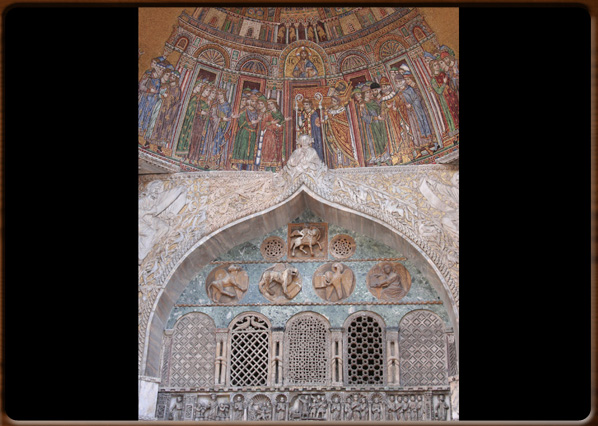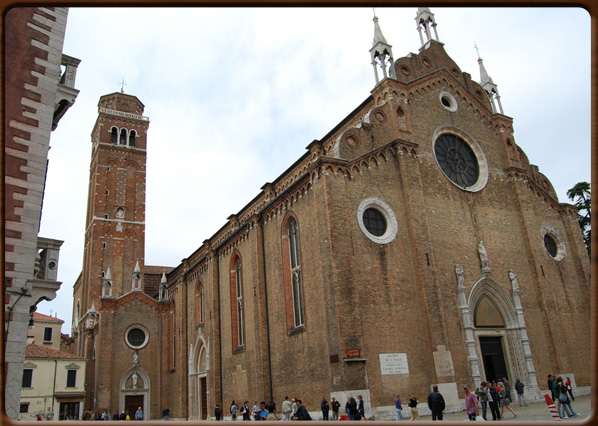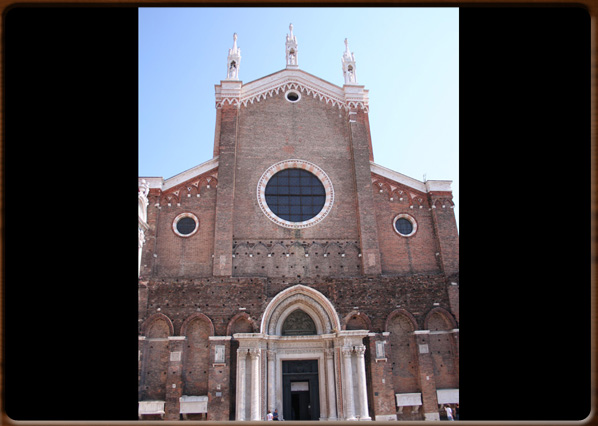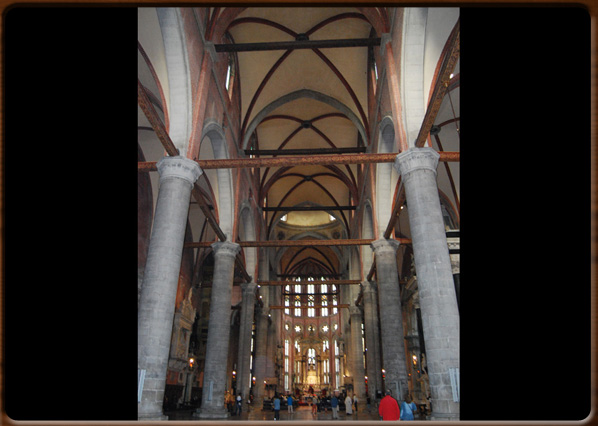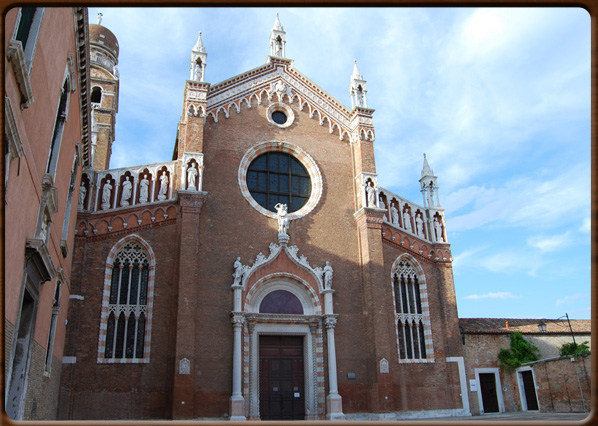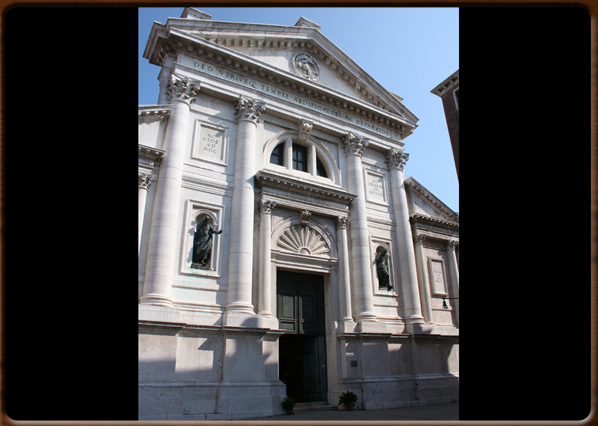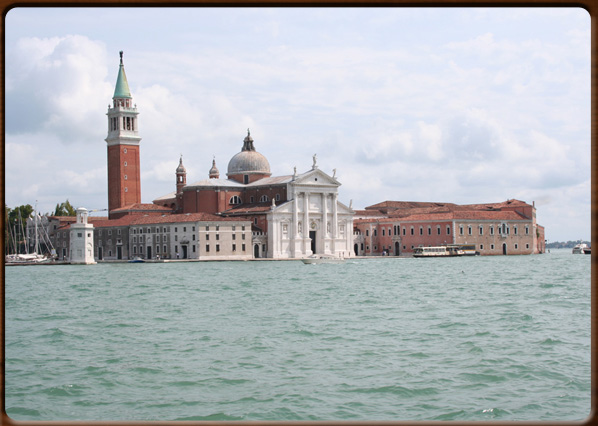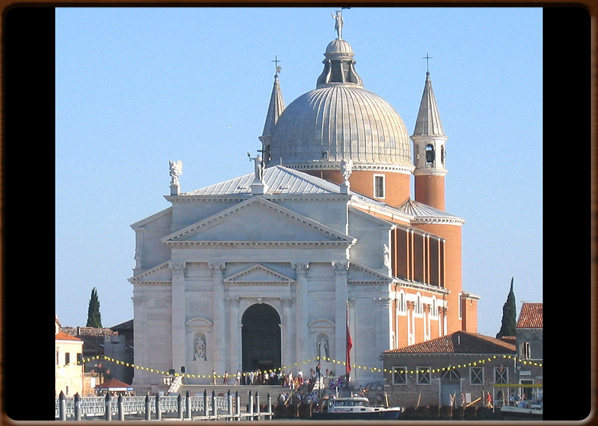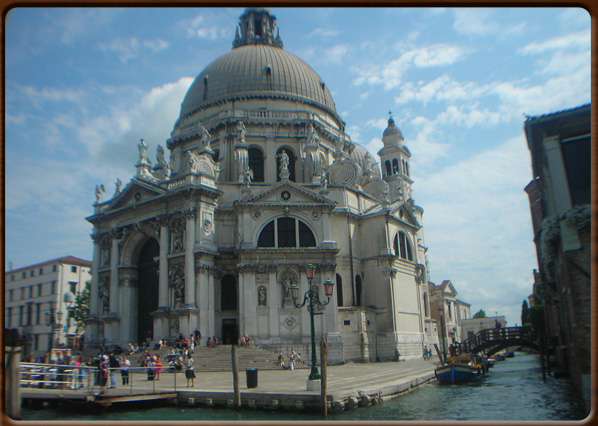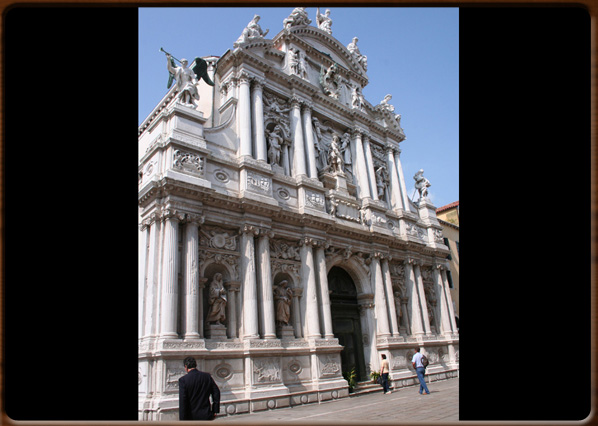Religious architecture in Venice is the result of several trends and experiences: the Ravenna style was adopted in the lagoon to begin with, later replaced by the Byzantine style. Romanesque-Gothic architecture in France, England and Germany came relatively late to Venice in the 13th and 14th Centuries, brought by various religious orders. Gothic buildings were thus constructed until the late 1400s.
The Basilica of Santa Maria Assunta in Torcello is believed to be the oldest monument in Venice. Despite various changes over the centuries, it still retains the beauty of the exarch churches in Ravenna.
The adjacent Chiesa di Santa Fosca was built at the same time as St. Mark’s Basilica and the Basilica di Santa Maria e San Donato on Murano.
This has a central cruciform plan, its small apses typical of the harmonious refined Byzantine conception of space. The wonderful apse of Santa Maria e San Donato (11th-12th Century) on Murano is reflected by the water of the lagoon. This church has the typical lightness of the Byzantine Romanesque civil buildings of the time. The Basilica’s interior has a Gothic ceiling like the keel of the ship.The golden apse faces the rising sun, as in the case with many Venetian churches: here the Virgin Mary stands alone, in the solemn Byzantine pose . St. Mark’s Basilica was built in 829, two centuries after the construction of Santa Maria Assunta in Torcello. The Basilica holds the remains St. Mark the Evangelist, stolen from Alexandria (Egypt) in 828 by the merchants Buono da Malamocco and Rustico da Torcello.
Professor Andrew Chugg, however, has a bold thesis: the remains of St. Mark are, in fact, those of Alexander the Great. Supporting his thesis, a marble slab on the northern side of the Basilica depicts Alexander the Great ascending to heaven between two dragons .
St. Mark’s is a
Greek cross with five domes and
naves divided by colonnades along the pillars supporting the domes. A
narthex precedes the structure of the building, inspired by the Apostoleion , the Church of the Holy Apostles in
Constantinople (destroyed in the 1400s).
Moorish Arab influences can be seen in the Porta dei Fiori and the windows with their grates over the first and fifth portal in the facade. The Chiesa di
San Nicolò dei Mendicoli has a typically Romanesque-Byzantine layout with its three naves.
The Gothic style of religious architecture was popular from the 13th Century until the middle of the 15th Century. The exarch tradition merged with that of the forms imported by various religious orders: the Franciscan Order built the Basilica di Santa Maria Gloriosa dei Frari and the Dominican Order those of San Zanipolo and the Basilica dei Santi Giovanni e Paolo .
Other major religious buildings are the Madonna dell'Orto and Santo Stefano . Solemn, simple buildings quite different from the Gothic buildings in the rest of Europe. Two Lombard architects - Mauro Codussi (or Coducci) and Pietro Lombardo - brought the Renaissance to Venice, thus introducing the Tuscan style.
The first Renaissance religious building in Venice was the Chiesa di San Michele in Isola (Mauro Codussi, 1469). Codussi repeated the form of the façade, with its simple architectural lines, in his completion of the Chiesa di San Zaccaria .
His final work in Venice is the Chiesa di San Giovanni Crisostomo, built between 1497 and 1504, with its central layout that incorporates the Byzantine tradition. Other Renaissance churches with a Greek cross layout are Santa Matria Materdomini and San Felice.
The most beautiful Renaissance church in Venice is doubtlessly
Santa Maria dei Miracoli , built between 1481 and 1489 by Pietro Lombardo and his sons. The harmony and beauty of its proportions, lines and decorations make this church one of Venice’s treasures and was even sung about by Ezra Pound in his "Cantos".
The Tuscan architect Jacopo Tatti (Sansovino) arrived in Venice after fleeing from Rome following the Sack of the Eternal City in 1527. He became the protagonist of Renovatio Urbis (renewal of the city) commissioned by the Doge Andrea Gritti .
Sansovino has left us an important religious work: the inside of the Franciscan church of San Francesco della Vigna .
The requirements of the Franciscan Order meant that Sansovino had to make some changes to the original plans for this building. Fundamental changes are found in the area of the presbytery and transept, made under the supervision of Brother Francesco Zorzi. These fix the proportions of the new construction to reflect the formulas and ratios of harmony and proportions from the Cabalistic, Pythagoric and Neoplatonic traditions.
The imposing facade of this church, designed by Andrea Palladio, has been criticised in the past for its "incorrect" proportions. In contrast to the work of Sansovino and his classical Tuscan style, Palladio’s works include Manneristic elements, based on the use of light and colour. Palladio tended to highlight forms of eternal beauty. His masterpieces of religious architecture are the Basilica di San Giorgio Maggiore and the Chiesa del Redentore .
The "round baroque machine" of Santa Maria della Salute typifies the new concepts of construction introduced by Baldassarre Longhena, the great seventeenth-century Venetian architect.
This was a novel style not only for Venice but for all Italy: the two major architects of the time, Bernini and Borromini had yet to build their more famous works when this church was designed (1631). The octagonal layout of the church takes on extraordinary significance for the Serenissima, becoming the symbol and optical point of connection in St. Mark’s Basin. Once again, though, the Cabala dictated the rules for this church, with numerological values linked to the figures of eight, eleven and sixteen.
The pompous commemorative façade of Santa Maria del Giglio or Zobenigo that exalts the glories of Antonio Barbaro and his family is the work of Giuseppe Sardi.
The statues are by the Flemish sculptor Josse Le Court.
The facade of the Chiesa di San Moisè with its unbridled plastic and sculptural decoration celebrating the Fini family is also of Flemish design, the architect being Heinrich Meyring (Merengo).
The delightful tiny Chiesa di Maria Maddalena (1760) - a masterpiece of Venetian Neoclassicism - ends this brief description of the churches in Venice and how they merged with other traditions and cultures.
Those interested in esoterics should note that this building has a central layout like the pagan temples dedicated to the sun and the churches of the Templars. It is built in the same area as Palazzo Loredan, later Vendramin Calergi which bears the words "Non Nobis Domine, Non Nobis": the words that begin the psalm of the Templars.
Michelangelo Mandich

